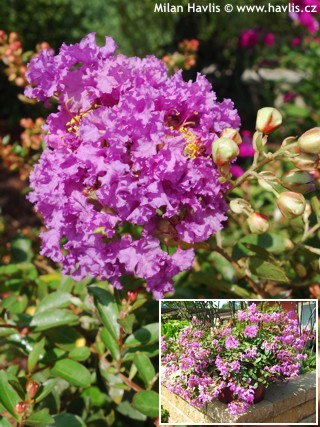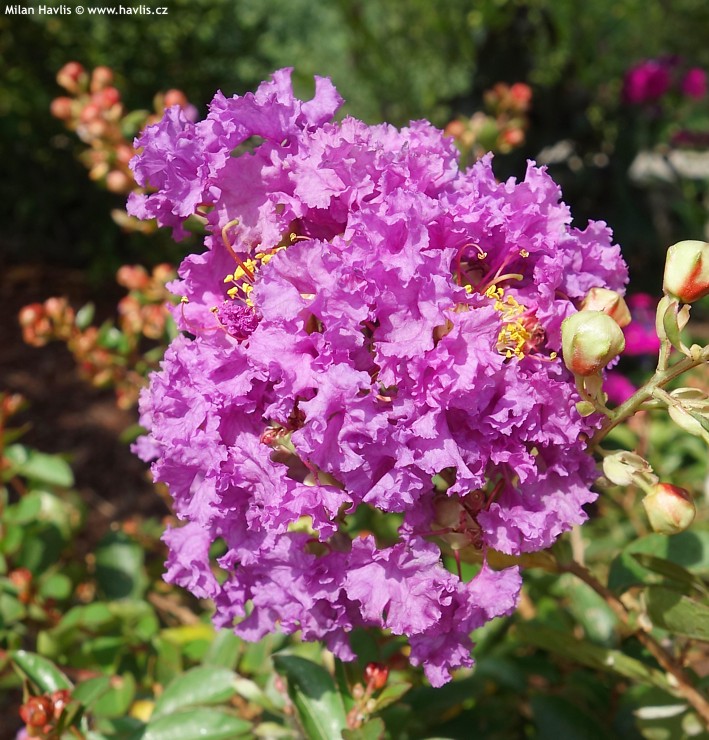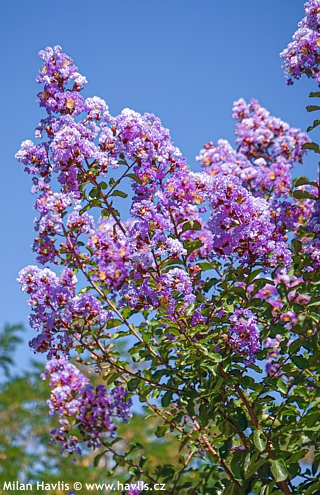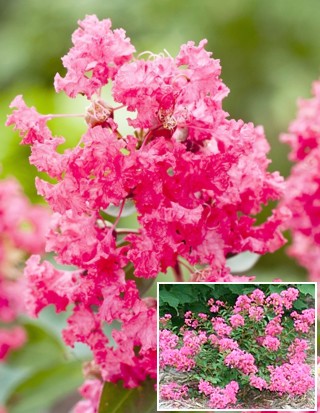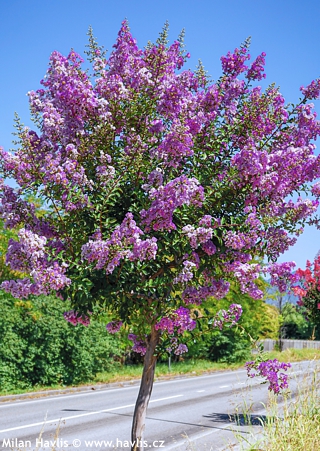Lagerstroemia indica 'VIOLET FILLI' crepe myrtle
Lagerstroemia
Crepe myrtle is a flowering shrub or small tree from China. It was first introduced to the USA and the UK in the 18th century. The original plant lagerstroemia indica is too tender and not too pretty so breeders were working on further hybridization and the most attractive varieties available now are believed to be results of crossing with l.speciosa and l.fauriei. Far more important news for us is the fact that among those finished plants were selected others that survived lower temperatures than what was common in the areas of natural habitat so we have a few myrtles that can grow even in our climate. Some were selections, other further hybrids.
The Fleming brothers from Nebraska, USA, are those who brought some exquisite hardy hibiscus varieties. Also, they are responsible for this unique series of extremely hardy crepe myrtle called Filli, which took them almost 40 years to breed. In 1978 flowered for the first time Violet Filli with shorter panicles composed of beautiful, pastel violet, crepe flowers with yellow anthers. They come out from August until September. Deciduous leaves are elliptic to obovate, very glossy, green in summer and red in autumn. Unfortunately they are not resistant to powdery mildew and need to be treated. Filli crepe myrtle grows slowly, making a small shrub of only about half a meter tall and wide. Prune hard annually in spring. Patent No. PP14267 was issued in 2003.
Crepe myrtles need little care. They need full sun with zero shade during the day. Grow them in well-drained soil that should be kept moist before it gets fully established. If cultivated in acid soil the plant will make fabulous colour play of autumn foliage. Crape myrtle needs heavy mulching in winter and some mulch in summer to retain moisture. Fertilize in spring to encourage growth (nitrogen-based fertilizers), and in summer to encourage flowering (phosphorus-based fertilizers). The breeder claims hardiness down to -34°C (USDA zone 4).
Last update: 25-01-2019

































